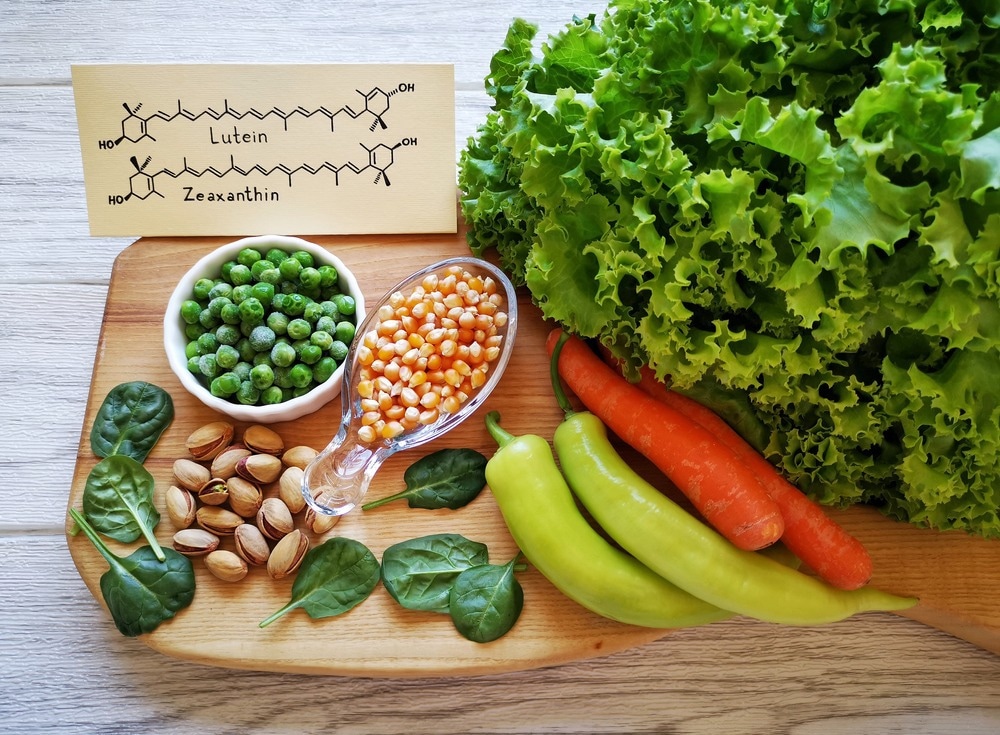In a recent study published in The American Journal of Clinical Nutrition, researchers assessed the impact of dietary carotenoids and vitamin C intake on the association between fruits and vegetable diet and preeclampsia.
 Study: Is the association between fruits and vegetables and preeclampsia due to higher dietary vitamin C and carotenoid intakes? Image Credit: Danijela Maksimovic/Shutterstock.com
Study: Is the association between fruits and vegetables and preeclampsia due to higher dietary vitamin C and carotenoid intakes? Image Credit: Danijela Maksimovic/Shutterstock.com
Background
The incidence of preeclampsia, a syndrome that affects 5% of US pregnancies, is rapidly increasing. The impact of nutritional status during conception on preeclampsia prevention has been a subject of interest for a long time. The vast array of bioactive compounds found in fruits and vegetables could provide valuable insight into the mechanisms behind disease development.
Periconceptional diets that are rich in fruits and vegetables may help prevent preeclampsia by providing dietary antioxidants such as vitamin C and carotenoids since oxidative stress is believed to play a role in the development of preeclampsia early in pregnancy.
About the study
The Nulliparous Pregnancy Outcomes Study: monitoring mothers-to-be (nuMoM2b) is a pregnancy cohort study performed in eight US medical centers between 2010 and 2013. In this study, the team conducted a secondary analysis of the nuMoM2b data. Eligible participants for the study were individuals who were pregnant at six to 13 weeks gestation and had no prior pregnancies that lasted for 20 weeks or more.
The study involved multiple visits by participants at different stages of their pregnancy such as at six to 13 weeks, 16 to 21 weeks, and 22 to 29 weeks. During these visits, research personnel collected data on various aspects such as demographics, behaviors, medical history, social variables, psychosocial assessments, and pregnancy-related events and complications. The study personnel also recorded pregnancy and birth outcomes, as well as delivery diagnoses, from medical records documented at least 30 days post-delivery.
A modified Block 2005 food frequency questionnaire (FFQ) was used to assess the usual dietary intake of participants during the three months around conception at the time of enrollment. The study focused on the participants' overall consumption of fruits and vegetables.
The Healthy Eating Index (HEI)-2015 constructed a density measurement by summing up the grams of fruits and vegetables. The study also involved two mediators: dietary vitamin C and dietary carotenoid consumption.
The dietary carotenoid intake was determined by adding up the estimated amounts of individual carotenoids from the FFQ, including alpha-carotene, beta-carotene, lutein-zeaxanthin, beta-cryptozanthin, and lycopene.
Results
The study found that the majority of participants were between the ages of 25 and 34 years, were non-Hispanic White, had a college education, were of normal weight, were married, had private insurance, and had planned their pregnancies. According to the HEI-2015 scores, there was a lack of compliance with the Dietary Guidelines for Americans with around 16% of the group consuming a diet containing at least 2.5 cups of fruits and vegetables per 1,000 kcal.
Individuals with higher fruit and vegetable consumption densities, as opposed to those with lower intakes, had a higher likelihood of being non-Hispanic White, married, older, non-smokers, physically active, have higher levels of education, and a lower body mass index (BMI). In addition to having better HEI-2015 scores, they exhibited fewer symptoms of stress, depression, and anxiety.
Consuming 2.5 cups/1000 kcal or more of fruits and vegetables led to higher dietary carotenoids and vitamin C consumption compared to consuming less than 2.5 cups/1000 kcal. The study also found that individuals who reported diets with high fruit and vegetable densities had a greater likelihood of fulfilling the estimated average requirement (EAR) for vitamin C, with over 90% meeting the requirement. In contrast, only 69% of those with lower intakes fulfilled the EAR. Carotenoid consumption of 74 mg/d or more showed comparable outcomes. Persons with higher fruit and vegetable density diets had higher dietary vitamin C and carotenoid intakes compared to those with lower fruit and vegetable density.
The team also found that consuming dietary vitamin C at or above the EAR or consuming dietary carotenoids of 74 mg/d or more did not show any correlation with the risks of early- or late-onset preeclampsia or preeclampsia as per bivariate analyses. No effects were observed even after adjusting for confounders. Dietary vitamin C and carotenoids did not mediate the protective influence of high fruit and vegetable density against the risk of late-onset preeclampsia and preeclampsia.
Conclusion
The study found that despite the high vitamin C and carotenoid content in diets rich in fruits and vegetables, they did not play a role in the protective correlation between high consumption of fruits and vegetables and preeclampsia or late-onset preeclampsia. Early-onset preeclampsia was not found to be associated with fruit and vegetable density, as well as the consumption of vitamin C and carotenoids.
Since the link between fruit and vegetable consumption and preeclampsia cannot be attributed to vitamin C and carotenoids alone, therefore, alternative pathways should be investigated. Assessing the combination of nutrients and bioactive found in fruits and vegetables and studying the impact of individual fruits and vegetables on the risk of preeclampsia will be worthwhile.